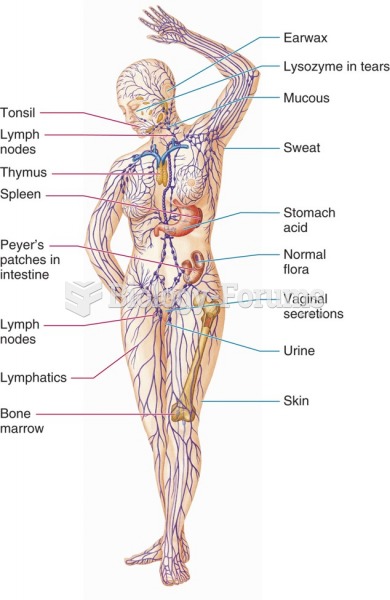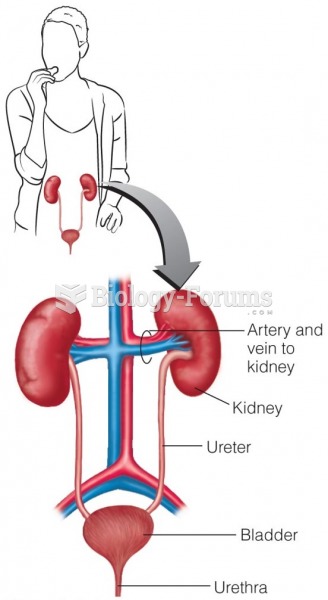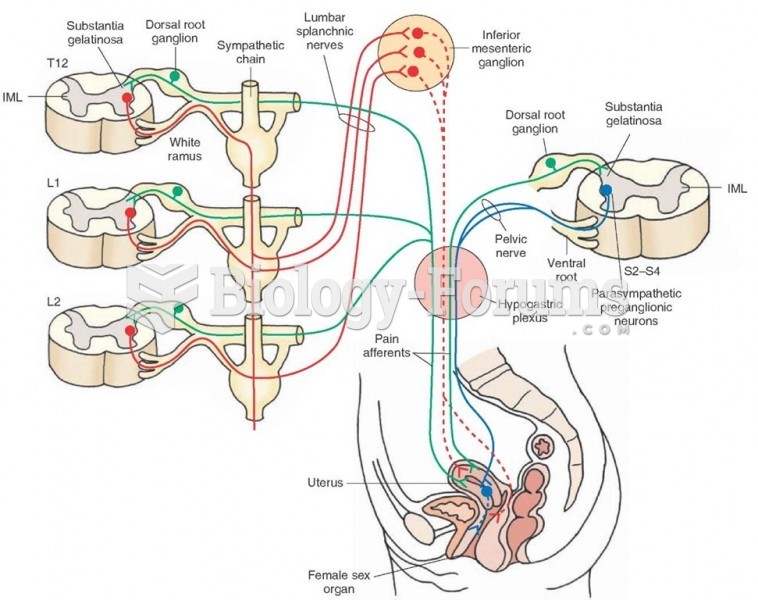|
|
|
The top five reasons that children stay home from school are as follows: colds, stomach flu (gastroenteritis), ear infection (otitis media), pink eye (conjunctivitis), and sore throat.
The immune system needs 9.5 hours of sleep in total darkness to recharge completely.
The longest a person has survived after a heart transplant is 24 years.
In most cases, kidneys can recover from almost complete loss of function, such as in acute kidney (renal) failure.
According to the American College of Allergy, Asthma & Immunology, more than 50 million Americans have some kind of food allergy. Food allergies affect between 4 and 6% of children, and 4% of adults, according to the CDC. The most common food allergies include shellfish, peanuts, walnuts, fish, eggs, milk, and soy.







